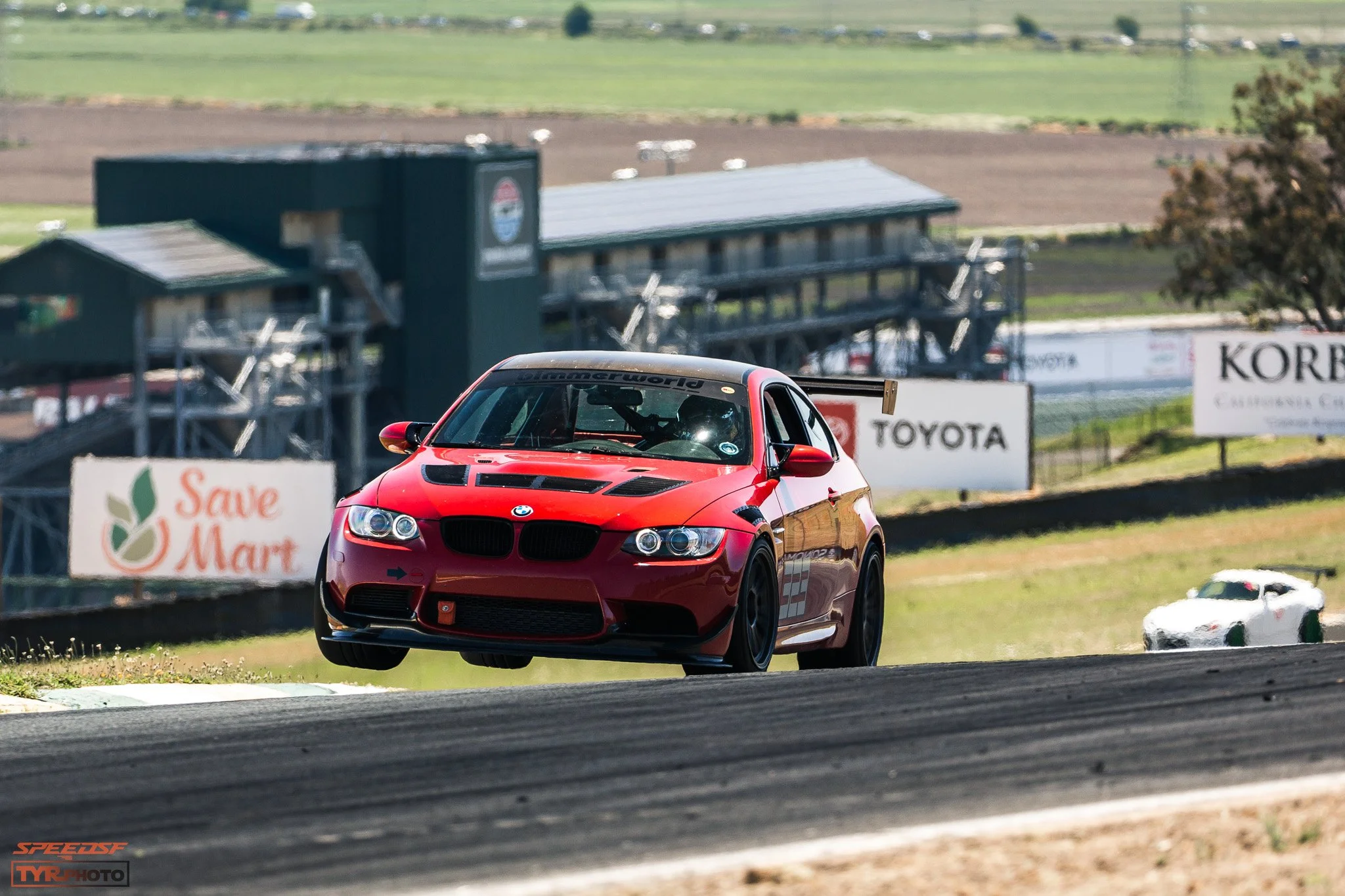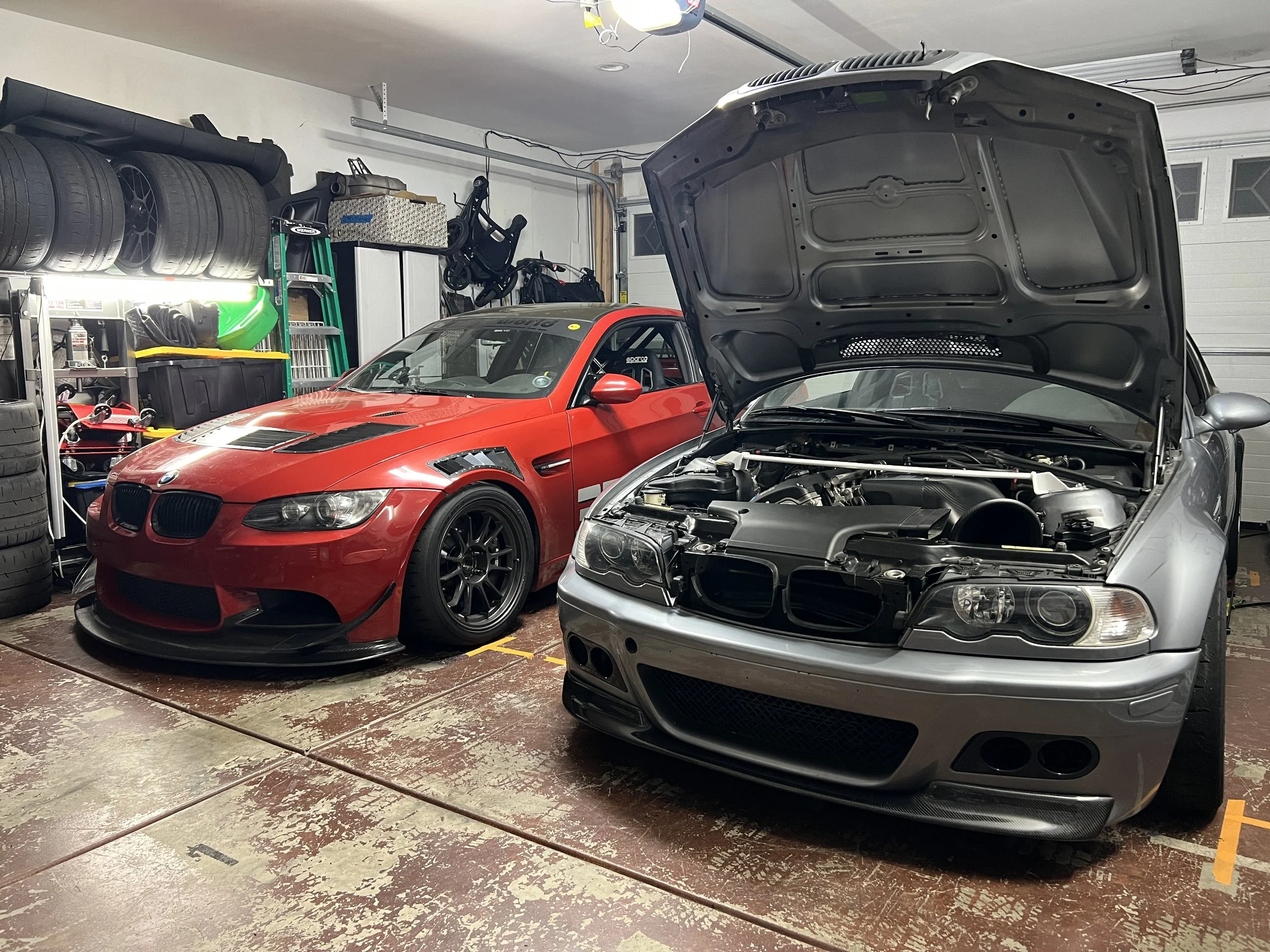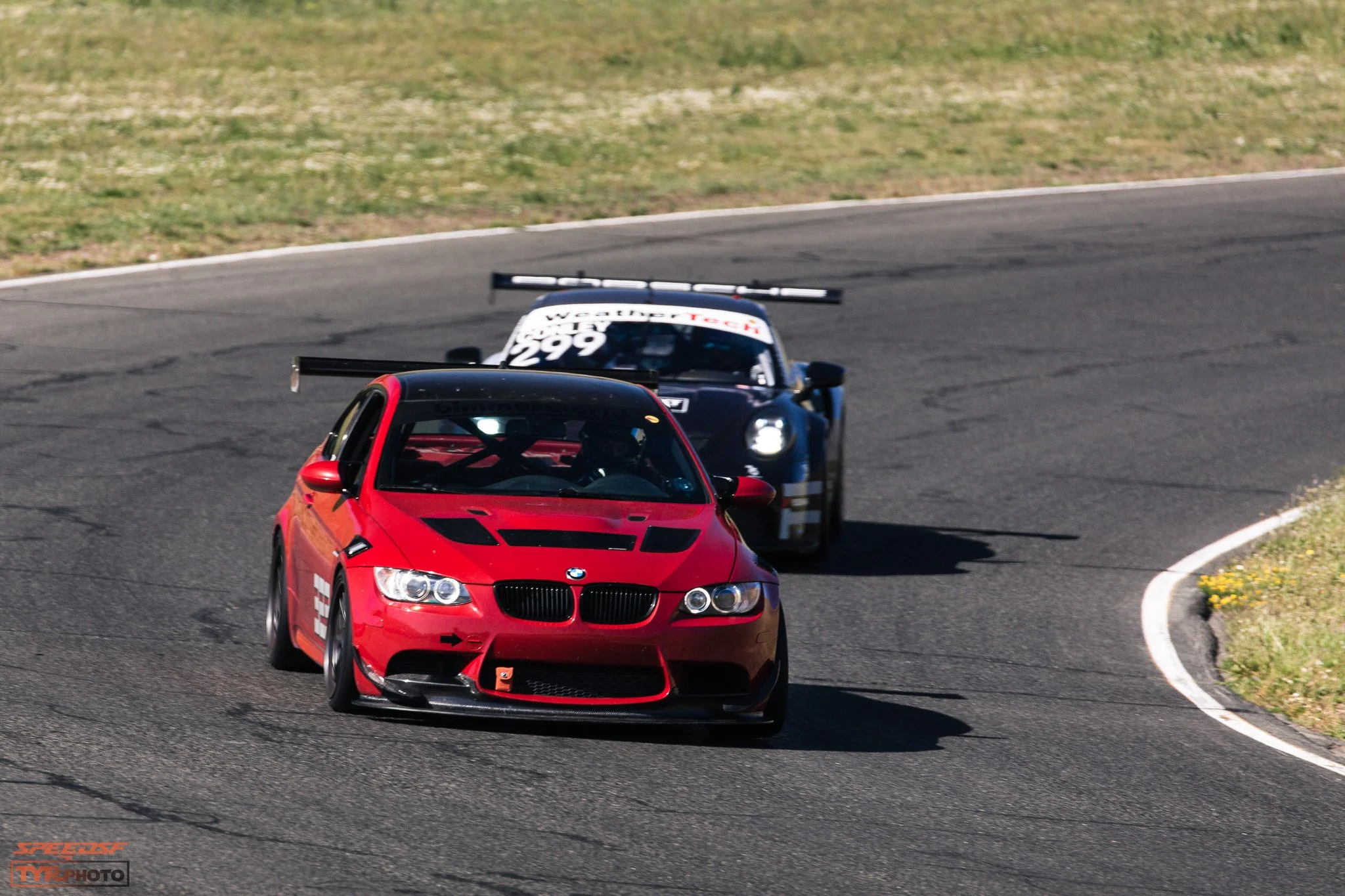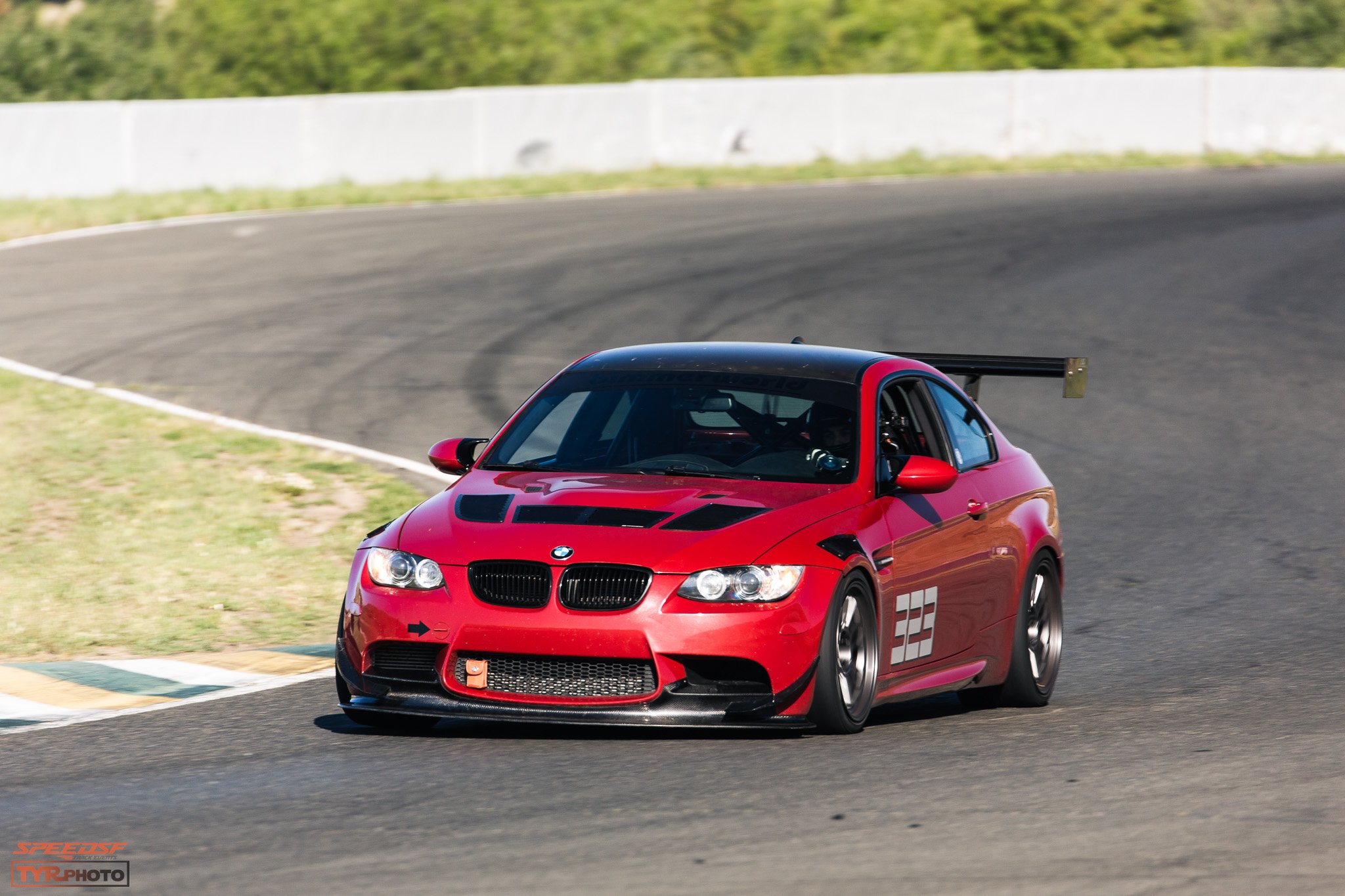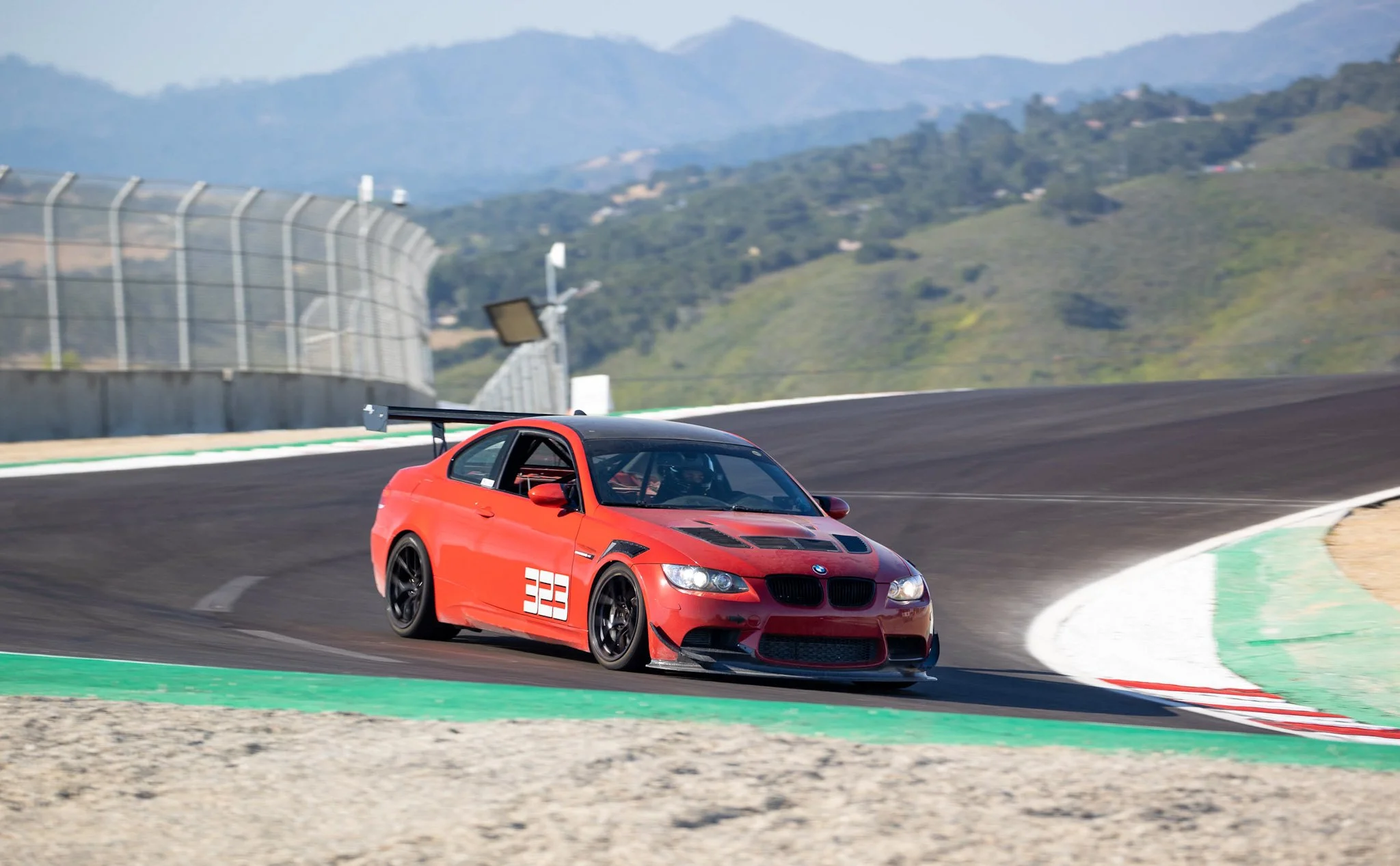Spencer's E92 M3: In Defense of Feel
From an early age, it was clear tinkering was in Spencer’s nature. High school autoshop was where he put together his first build, a B5 A4, and that natural inclination followed him to college, where he was able to pay some of his tuition with a little on-the-side engine tuning. His mechanical engineering studies led him into a career in data analysis, and the fastidious approach he developed in that time served him well when he began his all-absorbing hobby a few years later.
A few years out of school, Spencer decided to take the plunge and enter the world of time attack. Already a steep learning curve for a tuner with limited experience on track, Spencer’s task wasn’t simplified when he picked a BMW 135i as his project car. Regular overheating made it hard to stay in the seat, and the torque onset of the turbo motor, combined with the short wheelbase, made it feel like it was trying to murder Spencer at most corners.
Thrilled with competition of time attack, Spencer decided to plow forward with his build, despite the regular headaches the 135i posed. An F80 M3 followed, and while that car had plenty of potential, its consumable cost gave his pause. He needed something a little better suited to the track.
The E92 M3 caught his eye. Being a bit lighter than the F80 and, importantly, naturally-aspirated, it seemed like a more involving car with the potential to put down some respectable times with minimal work.
Despite having two kids and a regular job, Spencer performed most of the work on the E92 in his garage.
With the maintenance basics and a few bolt-ons, his DCT-equipped slicktop was capable of a 1:55 at CW13, which confirmed to him that this generation of M3 was the right choice. He could lean on its longer wheelbase, and the motor, though it lacked the torque of the turbo motors, had a powerband and a way of building to a crescendo that always left him grinning.
First and foremost, Spencer wanted it to be dependable. The necessary transmission cooler and oil cooler, the beefy rod bearings, and the throttle actuators were really all that this more robust generation needed to be totally ready at all times. The downside to this sturdier construction was weight, and even with some mild interior stripping, it was still too heavy.
An 8,600 rpm-redline courtesy of an Epic Motorsports tune gave Spencer tingly sensations that the blunt turbo cars never could.
No matter—its performance with a couple more additions could help him forget about its porkiness. Version 1 was completed with TC Designs-supplied MCS 1-ways, Stoptech ST40 brakes, a Pinnacle half-cage, and the standard GT4 wing-splitter combination.
The first iteration was satisfying, but with plenty of time to plan and tinker while on his maternity leave last year, he decided it was wise to put phase two in motion. He returned to his car’s weight loss plan; this time stripping the door cars, speakers, the radio, and basically anything besides the front carpet, the dash, and the air-conditioning. If you live east of the Oakland Hills as he does, you need to have cool air in the summertime.
Along with that, he added an Akrapovic titanium exhaust and fiberglass door cards, which helped shed a considerable amount of weight. Currently, the car weighs ~3,450 with Spencer and half a tank onboard.
CAPTION: Swapping the Stoptechs for a set of lighter AP Racing Pro5000R — a better feel his main reason for changing — helped trim a little unsprung weight, get rid of knockback, and, essentially, let him avoid thinking of braking problems.
An air filter, a catless x-pipe, a set of smaller 285/30-18 tires, and a 3.45 final drive helped spice up the acceleration some. It’s still a revvy motor without much under 4,000 revs, but with 380 horsepower and 275 lb-ft at the rear wheels, it makes more than enough jam spin the wheels in slower corners.
CAPTION: Since the engine lacks much torque, Spencer has to trim the rear wing out as much as he can.
However, the addition of an APR GT-250 wing and Bridgestone RE-71S tires make it very hard to unstick the rear in fourth, fifth, and sixth-gear corners. Some of that has to do with the longer wheelbase and the stability it brings, some is due to outright grip, and some of that is due to suppleness from the properly valved set of custom-valved MCS 2-way dampers courtesy of TC Designs.
The car still chews up front tires, and the motor’s thirst is remarkable, but those are two relatively small shortcomings for a reliable, hair-raising track machine which laps Buttonwillow 13CW in 1:51.8 and a 1:44.8 at Sonoma.
It’s been rock-solid, though some of that has to be attributed to his anal tendencies; he bolt-tests the car after every single track day. He street drives it, he sits in some semblance of comfort cruising around Walnut Creek on a July afternoon, and he still stares at it after a long work week. It gives him a sense of satisfaction that none of his other possessions do.
Being a bit of a perfectionist, Spencer still has some issues with the car as it sits. The weight, namely, is something that he wants to address, but he’s reached the point of diminishing returns. To put it on a carbon diet, as is necessary now, would cost big bucks. However, he might be able to nip at the heels of the Supras and the other current hot tickets if could pull another 200 pounds from the Bimmer.
He could bypass the diet plan and strap on a supercharger, but he fears that forced induction would move him further from the original M.O. that’s helped him put in dozens of faultless track days—some with double and triple sessions.
If there are two things that have enabled him to lap so quickly in a short timeframe, they’re his pragmatism and a fondness for analysis. His data analysis day job gives him the tools to make hours pouring over data fruitful, but his intimate understanding of the compromises at play also make him somewhat indecisive; knowing more makes it all the harder to make a choice. For example: while a blower might compromise the reliability of the near-bulletproof S65, it might be the most cost-effective way to put in a GTA-worthy lap time.
So, blower or carbon panels? Either way, the E92 is destined for some serious modifications in the near future, but before he signs another big check, he’s got to sit and mull over the information first.

